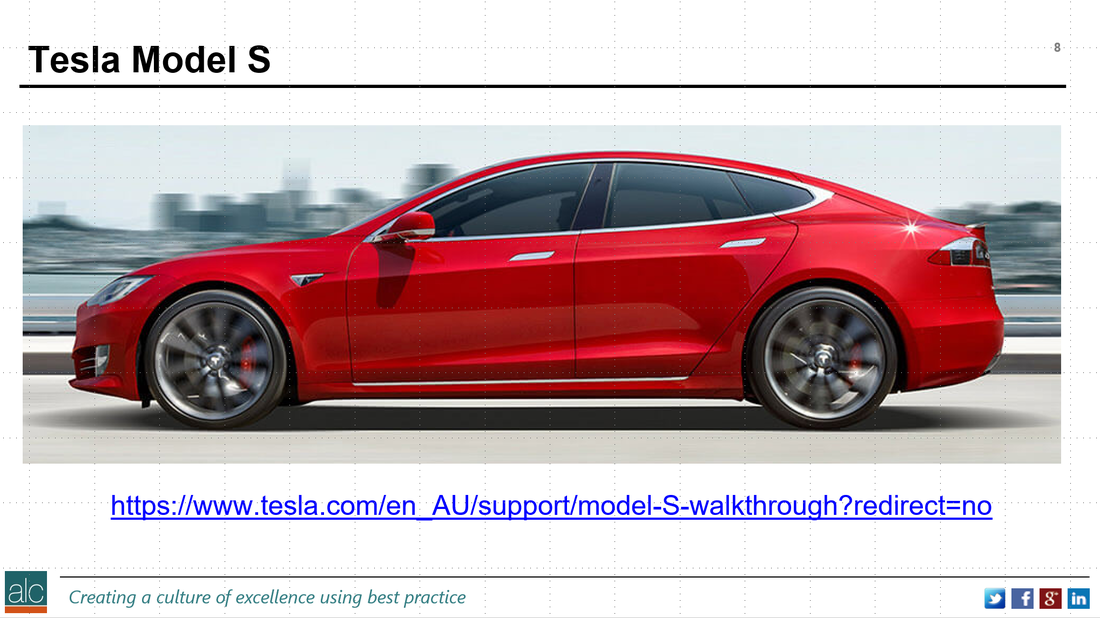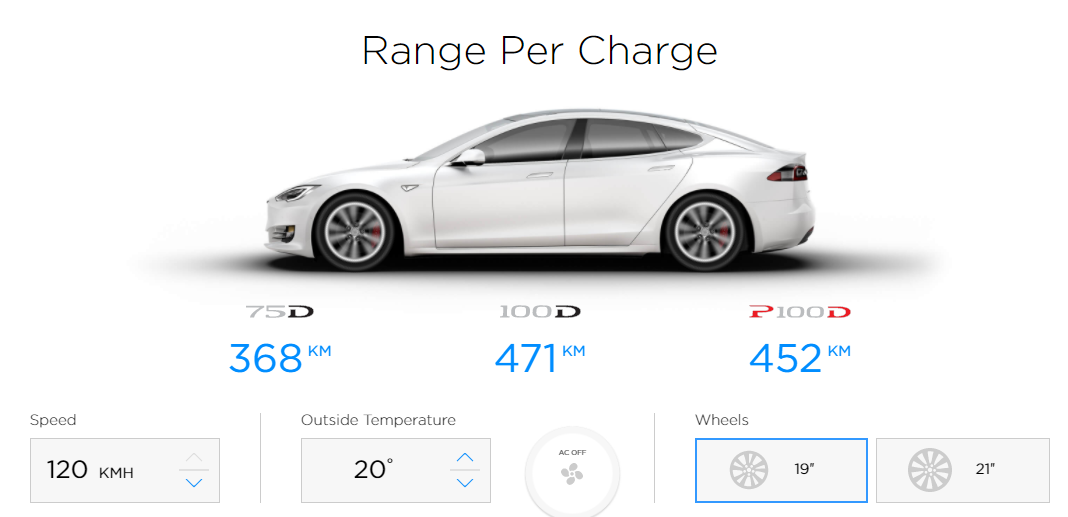|
I've given a few runs of my presentation on Driverless Cars in #Australia, #Malaysia and #NewZealand. One thing I've noticed is how engaged and excited the audience become when they see a #Tesla Model S, driving itself for the first time. So, what I wanted to achieve in this blog, is to share with you some of this magic and to show you some of the graphics and features I present to the audience.  The reason I've picked the Tesla Model S is because: 1 - it's a cool car, 2 - it's Tesla and who doesn't love Elon Musk and 3 - They make the most advanced and lowest price #Driverless cars in the world…oh…and did I tell you they have the best range of any electric car, maxxing out at around 667km for the lower-end model at 70 kph (see diagram 1 below) and decreasing to 368km at 120 kph. (see diagram 2 below). Pretty impressive huh..... Diagram 1 Diagram 2 The key to the driverless car is the Tesla Enhanced Autopilot system which provides a number of different automatic features. Basically, new features are added as software upgrades, with the Autopilot hardware already set to support years of automation ahead. And for those worried about hackers, the software upgrades only happen whilst the car is parked safely at home. The car is completely independent when on the road, so essentially all update traffic is blocked. There are 3 driver assist features I want to demonstrate via a series of compelling videos.
These features do not make the car driverless or fully autonomous, but provide a pathway to automated driving in the future: https://www.youtube.com/watch?v=UgNhYGAgmZo The final feature is the full Driverless mode. The best video I've found is the one shown by Tesla. Bear in mind, this video is now over 1 year old. The video is speeded up to make it shorter. https://www.tesla.com/en_AU/videos/autopilot-self-driving-hardware-neighborhood-short The 3 screens on the right, show 3 of the 8 cameras that the Autopilot system is using. The green boxes show seeing threats to the car, such as other cars and pedestrians, the blue boxes show out-of-path objects which it does not deem as threats to the car. It even picks up the traffic signals, see the orange colours, against the bright cloud background. All this is controlled by Artificial Intelligence which is delivered through a variety of technologies and techniques. The key technique at play here is Deep Learning, otherwise known as Neural Network modelling.
To find out more around how to use Deep Learning, you can visit Tesla’s partner, Nvidia: https://developer.nvidia.com/deep-learning
0 Comments
|
CategoriesAll Active Directory AI Architecture Big Data Blockchain Cloud Comedy Cyber DevOps Driverless Cars MicroServices Office 365 Scaled Agile Social Media AuthorPaul Colmer is an AWS Senior Technical Trainer. Paul has an infectious passion for inspring others to learn and to applying disruptive thinking in an engaging and positive way. Archives
May 2023
|







 RSS Feed
RSS Feed